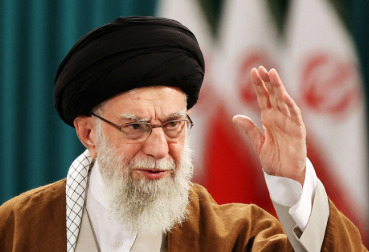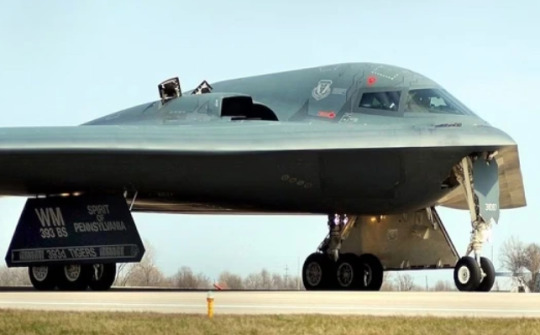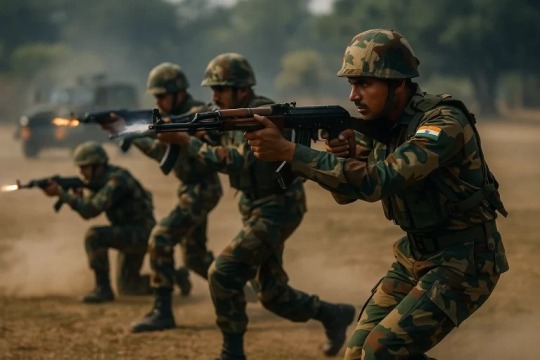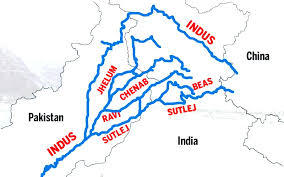Don't wanna be here? Send us removal request.
Text
Ali Khamenei: Iran’s Supreme Power Behind Politics

Ali Khamenei: Iran’s Supreme Leader in Focus
Ali Hosseini Khamenei, born in 1939 in Mashhad, Iran, rose from modest beginnings to become the Supreme Leader of the Islamic Republic — the nation’s most powerful figure. A devout Islamic scholar trained in Qom under Ayatollah Ruhollah Khomeini, Khamenei also cultivated a love for literature and languages, which would later influence his speeches and writings.
Khamenei was a vocal opponent of Shah Mohammad Reza Pahlavi and was repeatedly imprisoned for his revolutionary activism. After the 1979 Islamic Revolution, he quickly climbed the ranks of the new theocratic regime, eventually serving as President from 1981 to 1989. Upon Khomeini’s death, Khamenei was controversially appointed Supreme Leader, despite not being the highest-ranking cleric at the time.
As Supreme Leader, Khamenei holds sweeping authority over Iran’s foreign policy, military, judiciary, media, and more — overshadowing the president and parliament. He champions a foreign policy of resistance, particularly against the U.S. and Israel, supporting groups like Hezbollah and Hamas, and maintaining a hardline stance on Iran’s nuclear ambitions.
Domestically, his rule has faced growing unrest, including the 2009 Green Movement and 2022 protests following Mahsa Amini’s death. His government’s crackdowns on dissent have drawn international condemnation. Yet, Khamenei attributes these uprisings to Western interference.
A firm believer in Velayat-e Faqih — the rule of Islamic jurists — Khamenei blends political authority with religious ideology. Now in his 80s and ruling for over 35 years, questions about his succession and Iran’s future direction persist.
Khamenei’s legacy is one of both ideological steadfastness and deep controversy. Whether seen as a guardian of Islamic values or a symbol of authoritarian control, his impact on Iran’s identity and global role remains profound — and his story, unfinished.
Read full blog:- https://aadishworld.com/ali-khamenei-irans-supreme-power-behind-politics/
0 notes
Text
Free Fire Explained: Why It Is So Trendy in 2025?

Free Fire India in 2025: Why It Still Reigns Supreme
In 2025, Free Fire MAX remains one of the most popular mobile battle royale games worldwide, especially in regions like India, Brazil, and Indonesia. Developed by Garena, the game’s enduring appeal lies in its accessibility, fast gameplay, and evolving features that cater to both casual players and esports professionals.
At its core, Free Fire drops 50 players onto an island where they must gather weapons, survive, and outlast opponents to become the last one standing. Matches last just 10–15 minutes, making them ideal for quick, action-packed sessions.
A major reason for Free Fire’s dominance is its compatibility with low-end smartphones. Unlike many mobile games, it runs smoothly on nearly any device, giving it a massive user base. Its character-based system, offering over 40 unique characters with special skills, adds strategic depth and personalization.
The game also introduces frequent content updates — new maps, weapons, cosmetics, and seasonal events — keeping the gameplay fresh. In addition, Garena’s commitment to esports has transformed Free Fire into a professional platform, with international tournaments offering large prize pools.
For new players, it offers easy-to-learn mechanics with room for mastery. Tips include landing in low-traffic zones, using headphones for enemy detection, and mastering character abilities for an edge.
Parents may wonder if the game is safe for kids. While it contains non-gory gunplay, online features like voice chat and friend requests can expose children to strangers. Hence, monitoring and account linking are advised.
In conclusion, Free Fire’s continued success is driven by its inclusivity, fast-paced gameplay, strategic variety, and strong community engagement. Whether you’re playing solo or in a squad, for fun or fame, Free Fire MAX proves that mobile gaming can be both thrilling and accessible — even in 2025.
Read full blog:- https://aadishworld.com/free-fire-india-why-it-is-so-trendy/
0 notes
Text
Shubhanshu Shukla: India’s First ISS-Docking Astronaut on Axiom‑4

Shubhanshu Shukla: India’s Trailblazer in Space Exploration
Born on October 10, 1985, in Lucknow, Shubhanshu Shukla was inspired by the 1999 Kargil War to serve his nation. He joined the National Defence Academy and was commissioned into the Indian Air Force in 2006 after earning a degree in Computer Science and completing pilot training. With over 2,000 flight hours on various aircraft and qualifications as a Fighter Combat Leader and Test Pilot, Shukla was selected in 2019 for India’s human spaceflight program.
Shukla trained in Russia’s Yuri Gagarin Cosmonaut Training Center and later at ISRO’s facility in Bengaluru, earning a Master’s in Aerospace Engineering from IISc. In August 2024, he was named the pilot for the Axiom-4 mission, becoming the first Indian to reach the International Space Station (ISS) and the second Indian in space after Rakesh Sharma.
Launched on June 25, 2025, aboard a SpaceX Falcon 9, Ax‑4 included international crew members from the USA, Poland, and Hungary. The 14-day mission focused on over 60 scientific experiments in biology, AI, and space health, with India-led research on microalgae for long-duration missions. Shukla also promoted Indian culture aboard the ISS, narrating folk tales and engaging in live interactions with students.
Despite initial launch delays due to technical issues, the mission was a resounding success, sparking national pride and bolstering India’s space ambitions. Shukla’s contribution provides ISRO with critical insights for the upcoming Gaganyaan-4 mission, expected in 2026–27.
Group Captain Shukla’s pioneering role in Ax‑4 has not only advanced India’s space capabilities but also symbolized the nation’s growing influence in international space collaboration — blending science, service, and culture on a global stage.
Read more:- https://aadishworld.com/shubhanshu-shukla-indias-first-iss-docking-astronaut/
0 notes
Text
Gemini CLI: A Calm and Simple Way to Use the Internet

Gemini CLI: Your Calm, Ad-Free Corner of the Internet
In today’s web full of pop-ups, autoplay videos, and data-tracking, Gemini offers a refreshing alternative — a minimal, text-based protocol focused entirely on reading. Gemini CLI (Command Line Interface) is the simplest way to explore this space, using typed commands instead of clicks to access clean, distraction-free content.
Gemini is ideal for those who value privacy, speed, and clarity. With no ads, no tracking, and lightning-fast loading (even on slow connections), it feels like returning to the golden days of the internet. There are no sidebars, buttons, or flashy designs — just thoughtful, readable text.
On Gemini, you’ll discover genuine, personal content: journals, poetry, how-to guides, reflections on life, and more. It’s a space where real people share their thoughts without chasing SEO or social media trends.
Using Gemini CLI is easy: open your terminal, type a gemini:// URL, and read. No heavy apps, no accounts — just instant, peaceful access.
Gemini suits a wide range of users:
Readers who want undisturbed focus
Writers who dislike web design
Students seeking simple notes
Older adults and people on slow internet or older devices
It’s also a great publishing tool — you can create your own Gemini page using plain text. No coding required, just honest content.
Whether you’re commuting, tired of ads, or craving a space to write and think freely, Gemini offers a unique online retreat.
More than just a protocol, Gemini represents a movement toward a quieter, more human web — where reading and expression take center stage, not clicks and algorithms.
If you long for digital peace, Gemini CLI might be the online sanctuary you've been searching for.
Read full Blog:- https://aadishworld.com/gemini-cli-a-calm-and-simple-way-to-use-the-internet/
0 notes
Text
US B-2 Bombers Used in Iran Attacks: A Strategic Display of Power

U.S. B-2 Bombers Strike Iran — What Happened and What It Means
In a dramatic escalation of tensions in the Middle East, the U.S. deployed B-2 Spirit stealth bombers to strike strategic Iranian military targets. The operation, launched from Whiteman Air Force Base in Missouri, was in direct response to Iranian-backed militia attacks on American personnel, including a deadly drone strike in Iraq and threats to key shipping routes like the Strait of Hormuz.
The B-2 Spirit, a cutting-edge long-range stealth bomber, was chosen for its ability to evade radar, deliver massive payloads, and send a strong geopolitical signal. Capable of carrying up to 40,000 lbs of ordnance and flying over 11,000 km without refueling, the B-2 embodies U.S. air superiority.
Key Iranian targets reportedly included missile bases, drone factories, and communication hubs. While Iran’s state media downplayed the damage, defense analysts suggest the strikes were both militarily and symbolically effective.
The strategic goals behind the mission included dismantling Iranian military infrastructure, weakening its regional influence, and deterring further aggression. By deploying its most advanced bomber, the U.S. demonstrated both military resolve and global reach.
International reactions were mixed. U.S. allies like Israel and Saudi Arabia supported the strikes, while Russia, China, and the EU urged de-escalation and a return to diplomatic talks. Oil markets surged on fears of disruption in the Gulf.
The use of B-2 bombers — rather than drones or fighter jets — was a deliberate show of strength, emphasizing that no location is beyond American reach. While Iran has threatened retaliation, experts believe both sides will likely avoid all-out war, instead continuing conflict through proxies and cyber warfare.
This strike marks a turning point, highlighting the fragility of diplomacy and the high stakes of modern military engagement.
Read full blog:- https://aadishworld.com/us-b-2-bombers-used-in-iran-attacks/
0 notes
Text
Who is California Senator Alex Padilla? Background, Achievements & Current Role Explained

Senator Alex Padilla of California is a rising figure in U.S. politics, celebrated for his historic role as the first Latino U.S. Senator from the state. Born in 1973 to Mexican immigrant parents in Pacoima, Los Angeles, Padilla’s working-class upbringing deeply influenced his values of hard work, discipline, and service. A standout student, he graduated from MIT with a degree in Mechanical Engineering — a unique background that informs his data-driven approach to policymaking.
Padilla entered politics at the age of 26, winning a seat on the Los Angeles City Council and eventually becoming its youngest-ever president in 2001. His leadership was marked by focus on infrastructure, education, and community development. He later served as a California State Senator (2006–2014), where he championed public health, environmental protections, and tech policy. As California’s Secretary of State (2015–2021), Padilla modernized elections and improved voter access, overseeing record-breaking turnout and launching the California Motor Voter program.
In 2021, he was appointed to the U.S. Senate, filling Kamala Harris’s vacated seat. His appointment marked a significant moment in Latino representation. In 2022, he won a full six-year term. In the Senate, Padilla’s top legislative priorities include immigration reform, climate action, education access, and voting rights. He co-sponsored the Freedom to Vote Act and consistently advocates for DACA recipients and clean energy initiatives.
Serving on major Senate committees — including Judiciary, Environment, Homeland Security, and Budget — Padilla influences critical policy areas. Known for his pragmatic, empathetic leadership, he connects technical expertise with a deep understanding of community needs.
Padilla’s journey, from MIT to the Senate, embodies the modern American Dream — a story of resilience, representation, and progress that continues to inspire and impact both California and the nation.
Explore full blog:- https://aadishworld.com/who-is-california-senator-alex-padilla/
0 notes
Text
Ahmadabad Plane Crash: What Really Happened? Full Report & Updates

On June 12, 2025, Air India Flight AI-171, a Boeing 787–8 Dreamliner, crashed shortly after takeoff from Ahmedabad, Gujarat, in one of India’s deadliest aviation disasters. Just minutes into the flight, the aircraft experienced engine anomalies, prompting a Mayday call before it crashed into a student hostel near BJ Medical College, killing over 260 people, including 30 on the ground. Of the 242 onboard, only one — 28-year-old IT professional Vishwash Kumar — survived by leaping from an emergency exit moments before impact.
The tragedy triggered a swift emergency response involving NDRF, fire services, and local police. Leaders, including Prime Minister Modi, visited the site and pledged support, while compensation packages of ₹1 crore per deceased passenger and additional aid for local victims were announced.
Vishwash Kumar, the sole survivor, described seeing sparks and hearing abnormal engine sounds moments before the crash. His testimony is now key in the ongoing investigation led by the Aircraft Accident Investigation Bureau (AAIB), with assistance from US and UK aviation experts. Recovered black boxes are being analyzed to determine the cause, with possible theories including engine failure, landing gear issues, or takeoff configuration errors.
The crash has had significant repercussions for the aviation sector. Air India grounded Dreamliners for inspection, and the DGCA initiated stringent checks on wide-body aircraft. Public confidence in air travel has also been shaken.
A candlelight vigil was held, and plans for a memorial at the crash site are underway. As the nation grieves, the Ahmadabad crash stands as a stark call for improved aviation safety, maintenance protocols, and accountability to prevent future tragedies.
Read full blog:- https://aadishworld.com/ahmadabad-plane-crash-what-really-happened-full-report-updates/
0 notes
Text
G7 Summit 2025: Major Highlights, Agenda, and Worldwide Impacts

The G7 Summit 2025, hosted in Puglia, Italy from June 13–15, brings together leaders from the world’s most advanced economies — USA, Canada, UK, Germany, France, Italy, Japan — and the European Union. With the theme “Responsibility, Sustainability, and Cooperation for Global Stability,” this year’s summit focuses on shaping policies in a rapidly changing global environment.
Six major agenda items dominate the summit: geopolitical peace (especially the Ukraine conflict and Asia-Pacific tensions), climate action (with goals aligned to COP30), artificial intelligence governance (including a proposed G7 AI Charter), pandemic preparedness, Africa-focused partnerships (targeting food security), and human rights and gender equality.
The summit will also feature key guest leaders from emerging economies such as India’s Narendra Modi, Brazil’s Lula da Silva, South Africa’s Cyril Ramaphosa, and Ukraine’s Volodymyr Zelenskyy. Their participation signals the G7’s effort to collaborate more with the Global South.
One major focus is on AI regulation following the EU–US agreements, making the summit crucial for shaping future digital ethics. Other expected outcomes include commitments to green finance, increased aid for Ukraine, and policies enhancing pandemic resilience.
Despite its global influence, the G7 faces criticism for lacking inclusivity and falling short on climate and migration commitments. Counter-summits and protests are expected to raise these concerns.
In contrast to the broader G20, the G7 remains a forum of developed nations but is seeking stronger ties with emerging economies to tackle global challenges more holistically.
As the world faces crises in climate, health, and global governance, G7 2025 stands as a defining moment for setting international priorities for a more resilient and cooperative future.
Explore more:- https://aadishworld.com/g7-summit-2025/
0 notes
Text
Ukraine’s Operation Spider’s Web: The Biggest Drone Strike on Russian Airfields in 2025

Operation Spider Web: Ukraine’s Game-Changing Drone Strike on Russia
On June 1, 2025, Ukraine launched Operation Spider Web, its largest and most sophisticated drone strike to date, targeting five key Russian airbases: Belaya, Dyagilevo, Ivanovo Severny, Olenya, and Ukrainka. This bold and meticulously planned offensive, led by President Zelenskyy over 18 months, involved 117 drones and resulted in the destruction of over 40 Russian aircraft, inflicting an estimated $7 billion in losses.
The operation’s brilliance lay in its deception and coordination. Ukrainian drones were secretly embedded in civilian-looking trucks and containers, allowing them to bypass Russian defenses. Drones were also launched from multiple locations across Ukraine, overwhelming Russian air defense systems. The precision-guided drones targeted bombers (Tu-95, Tu-22M3), refueling aircraft (Il-78), and surveillance planes (A-50 AWACS), striking critical components of Russia’s long-range air strike capabilities.
The global reaction was immediate. President Putin reportedly held a tense 75-minute call with Donald Trump, warning of retaliation. NATO termed the strike a “wake-up call,” while defense analysts praised Ukraine’s asymmetric warfare tactics. Social media and satellite footage amplified the event’s impact, showcasing real-time visuals of the destruction.
Operation Spider Web has redefined modern warfare in several ways: it proved that low-cost drones can cripple billion-dollar assets, demonstrated psychological and tactical superiority, and showcased the future of conflict — where AI, deception, and precision dominate over brute force.
Beyond the immediate damage, this mission signals a shift in military doctrine globally. Nations are now re-evaluating airbase defenses and investing heavily in drone countermeasures. However, it also raises ethical concerns about escalation and civilian safety in drone-led warfare.
In essence, Operation Spider Web wasn’t just an attack — it was a bold statement of strategic innovation and a glimpse into the evolving face of 21st-century conflict.
Read full blog:- https://aadishworld.com/ukraines-operation-spiders-web-the-biggest-drone-strike/
0 notes
Text
IPL 2025 Final Match Winner: Royal Challengers Bengaluru Finally Lift the Trophy

RCB Wins IPL 2025 After 18-Year Wait: A Historic Triumph
The IPL 2025 Final saw Royal Challengers Bengaluru (RCB) clinch their first-ever IPL title, defeating Punjab Kings (PBKS) by just 6 runs in a thrilling finale at the Narendra Modi Stadium, Ahmedabad. After years of heartbreak, RCB finally broke their 18-year title drought in front of millions of emotional fans.
Opting to bat first after PBKS won the toss, RCB posted 190/9. Virat Kohli played a crucial knock of 43 (35), supported by Rajat Patidar (26 off 16) and Liam Livingstone (25 off 15). PBKS started their chase strongly with Josh Inglis scoring 39 (23) and Shashank Singh leading the fightback with an unbeaten 61 (30). However, RCB’s bowlers held their nerve — Krunal Pandya (2/17) and Bhuvneshwar Kumar (2/38) delivering under pressure — to restrict PBKS to 184/7.
Krunal Pandya was named Player of the Match for his match-winning spell. The emotional high point came when a tearful Virat Kohli, RCB’s long-time icon, celebrated by inviting legends Chris Gayle and AB de Villiers on stage.
RCB’s road to victory included a second-place finish in the league stage and two key wins over PBKS in Qualifier 1 and the Final. Their turnaround was marked by strategic brilliance, including the mid-season inclusion of Krunal Pandya and a revitalized bowling attack.
PBKS, despite topping the league table and reaching the final, fell short once again. Sai Sudharsan (GT) topped the season’s runs chart with 759, while Prasidh Krishna (GT) claimed most wickets (25), and Suryakumar Yadav (MI) was named Most Valuable Player.
RCB’s win isn’t just a championship — it’s a redemption story that will be remembered as one of the most emotional and inspiring chapters in IPL history.
Read full blog:- https://aadishworld.com/ipl-2025-final-match-winner-royal-challengers-bengaluru/
0 notes
Text
Norway Chess 2025: Gukesh vs Magnus – A Battle of Generations

Norway Chess 2025, held from May 27 to June 7 in Stavanger, delivered a historic showdown between India’s rising star, 17-year-old Grandmaster D. Gukesh, and Norwegian legend Magnus Carlsen. The event, featuring the world’s top 10 players, was highlighted by this symbolic generational duel.
Gukesh, fresh off his 2024 Candidates Tournament victory, faced Carlsen on his home turf in a highly anticipated classical game. Gukesh played the Italian Game and gained space, but Carlsen’s strategic defense led to a draw. In the Armageddon tie-break, Carlsen, playing Black, used his time advantage to secure the win.
Final Result:
Gukesh: 0.5 points (draw, lost Armageddon)
Carlsen: 1.5 points (draw, won Armageddon)
The match underscored a shift in global chess, with Gukesh demonstrating composure and elite-level readiness. His performance, alongside peers like Praggnanandhaa and Arjun Erigaisi, affirms India’s growing chess dominance.
Other highlights included Alireza Firouzja’s bold win over Caruana, Hikaru Nakamura’s endgame heroics, and GM Koneru Humpy’s resurgence in women’s chess. Social media buzz (#GukeshVsMagnus) and record streaming numbers signaled a surge in global chess interest.
Experts like Viswanathan Anand and Anish Giri praised the match’s intensity and Gukesh’s maturity. More than a result, the Carlsen-Gukesh duel represented a generational shift and a thrilling future for chess.
Read full blog:- https://aadishworld.com/norway-chess-2025-winner/
0 notes
Text
Google Store India: The Ultimate Guide to Indian Consumers in 2025

Google Store in India: Everything You Need to Know
India’s booming digital landscape has prompted Google to launch the Google Store India, its official online platform offering direct access to premium Google products. This eliminates the need to rely on third-party sellers like Amazon or Flipkart, where product authenticity and warranty support have often been inconsistent.
What Is Google Store India?
It’s Google’s dedicated e-commerce platform for Indian consumers, offering a range of genuine products with official warranty, support, and exclusive launch benefits.
Products Available
Google Store India features a robust lineup, including the Pixel 8, Pixel 8 Pro, and Pixel 7a smartphones, Pixel Watch 2, Pixel Buds Pro, and smart home devices like Nest Audio, Nest Hub (2nd Gen), and Nest Doorbell. Accessories like chargers and cases are also available. The Pixel Fold, Google’s first foldable phone, is expected to launch soon.
Why Shop Here?
Key advantages include:
Authenticity: 100% original products with Google-backed warranty.
Flexible Payments: Support for UPI, credit/debit cards, EMIs, and net banking.
Faster Delivery: 3–7 business days with pre-order priority.
Return Policy: 15-day return window on unused items.
Promotions: Frequent discounts, festive deals, and cashback offers.
Support and Services
Google Store provides professional customer assistance, order tracking, and easy access to returns or repairs. Devices are automatically linked to your Google Account for smooth updates and security management.
Why It’s Better
Compared to Amazon or Flipkart, Google Store ensures:
Guaranteed authenticity
Early access to new launches
No risk of refurbished or fake products
Conclusion
Google Store India offers a safe, direct, and convenient way to explore Google’s ecosystem. Whether upgrading your phone or building a smart home, it’s a reliable choice backed by Google’s quality and support
Explore full blog here:- https://aadishworld.com/google-store-india-the-ultimate-guide-to-indian-consumers-in-2025/
0 notes
Text
Mock Drill in India: An Important Exercise Again

Mock Drills in India: A Pillar of Disaster Preparedness
India’s vulnerability to natural and man-made disasters — ranging from earthquakes and floods to industrial accidents — necessitates a strong focus on disaster preparedness. Mock drills have become a vital tool across the country, enabling individuals, institutions, and emergency services to practice coordinated responses in simulated emergency scenarios.
A mock drill is a structured simulation designed to test emergency response systems, train people in safety procedures, and uncover gaps in preparedness. These drills are conducted across various sectors including schools, hospitals, factories, and public transportation systems.
Key benefits of mock drills include reducing panic, improving response time, testing safety infrastructure, ensuring legal compliance, and boosting confidence among participants. They help create a culture of awareness and preparedness, which is critical in a densely populated and disaster-prone country like India.
India conducts different types of mock drills tailored to specific risks:
Fire drills in offices and hospitals
Earthquake drills in seismic zones
Flood evacuation drills in states like Assam and Kerala
Industrial accident drills in chemical and oil factories
Medical emergency drills in urban centers
Terrorist attack drills in malls and transport hubs
A typical mock drill involves four stages: planning, preparation, implementation, and evaluation. It includes selecting scenarios, assigning roles, coordinating with local authorities, and conducting a post-drill review.
Legal frameworks, such as the Disaster Management Act (2005), Factories Act (1948), and various fire safety regulations, mandate regular drills. The National Disaster Management Authority (NDMA) also provides guidelines and support for conducting them.
Real-life examples — like Delhi Metro’s evacuation exercises and mock terror drills at Mumbai Airport — demonstrate their effectiveness.
In conclusion, mock drills are not optional — they’re a critical component of India’s emergency readiness, helping save lives and resources when disaster strikes.
Explore full blog:- https://aadishworld.com/mock-drill-in-india-an-important-exercise-again/
0 notes
Text
Indus Waters Treaty 1960: A Historical Water-Sharing Agreement between India and Pakistan

Indus Waters Treaty, 1960: A Timeless Model of Water Diplomacy
The Indus Waters Treaty (IWT), signed in 1960 between India and Pakistan with the World Bank as a facilitator, is a landmark agreement in transboundary water management. Despite long-standing hostilities and three wars between the two nations, the treaty has withstood the test of time, symbolizing resilience in diplomacy and cooperation.
Historical Background
Following the 1947 Partition, India inherited the upstream control of the Indus River system, while Pakistan, situated downstream, became highly dependent on it for agriculture and hydropower. The resulting tensions prompted nearly a decade of negotiations, culminating in the treaty signed by Jawaharlal Nehru (India), Ayub Khan (Pakistan), and W.A.B. Iliff (World Bank) on September 19, 1960.
Key Provisions
The treaty divides the six rivers of the Indus system:
Eastern Rivers (Ravi, Beas, Sutlej) are allocated to India.
Western Rivers (Indus, Jhelum, Chenab) are allocated to Pakistan, with India allowed limited, non-consumptive use.
A Permanent Indus Commission facilitates data sharing, dispute resolution, and treaty implementation. India can build run-of-the-river hydroelectric projects on western rivers but must comply with strict technical parameters.
Significance
Water Security for Pakistan: Ensures consistent water flow critical for survival.
Conflict Avoidance: The treaty has endured even through armed conflicts.
Dispute Resolution: Offers a structured mechanism for addressing disagreements.
Development and Environment: Supports agriculture, energy, and sustainability.
Challenges
Disputes over Indian hydropower projects like Baglihar and Kishanganga have led to international arbitration. Calls within India to reconsider the treaty have risen amid heightened tensions, though no formal withdrawal has occurred.
Conclusion
The IWT stands as a rare, enduring model of peaceful international water sharing. In the face of climate change and rising water stress, its continued success will depend on mutual cooperation, adaptive governance, and institutional strengthening.
Explore more:- https://aadishworld.com/indus-waters-treaty-1960/
0 notes
Text
Realme GT-7 Pro Launch in India : Price, Specifications, and Complete Analysis

The Realme GT 7 Pro is poised to be one of 2025’s most exciting smartphone releases, with its India launch expected in July or August 2025. Touted as a “flagship killer,” this premium mid-range device will likely be priced between ₹47,999 and ₹54,999, making it a strong competitor against brands like OnePlus, Xiaomi, and iQOO.
The GT 7 Pro is expected to feature a 6.78-inch curved AMOLED display with a 1.5K resolution, 144Hz refresh rate, and HDR10+ support. The phone will have a premium build with a glass back, aluminum frame, and IP65 water and dust resistance, available in stylish colors like Cosmic Silver, Electric Blue, and Astral Black.
Under the hood, it will be powered by the Snapdragon 8 Gen 3 processor, coupled with LPDDR5X RAM and UFS 4.0 storage, promising top-tier performance for gaming and multitasking. The camera setup includes a 50MP Sony IMX890 primary sensor with OIS, an 8MP ultra-wide, and a 2MP macro, while the front will house a 32MP selfie camera with AI features.
Battery performance is another highlight, with a 5,500mAh battery, 120W SuperVOOC fast charging, and a rumored 50W wireless charging option — a first for the GT series. It is expected to run Android 15 with Realme UI 5.0, offering improved privacy, smoother animations, and greater customization.
In summary, the Realme GT 7 Pro offers flagship-grade features at a lower price, making it a compelling choice for tech-savvy users looking for high performance, advanced cameras, and super-fast charging in a stylish package.
click on the link to know more:- https://aadishworld.com/realme-gt-7-pro-launch-in-india/
0 notes
Text
COVID Cases in India: Trends, Safety Precautions, and What’s in Store

Although COVID-19 is no longer a global health emergency, its presence still lingers. India, with over 1.4 billion people, has shifted from crisis mode to long-term public health management. Since the deadly second wave of 2021, the country has made significant progress, though occasional outbreaks continue, driven by seasonal factors, travel, and emerging variants.
As of May 2025, daily COVID-19 cases in India remain low and mostly mild due to high vaccination rates and hybrid immunity. A new Omicron sub-variant (EG.5) has been detected in Maharashtra and Delhi, but hospitalizations are primarily among the unvaccinated elderly or those with existing health conditions. The national positivity rate remains under 2%.
States like Maharashtra, Delhi NCR, Kerala, Tamil Nadu, and Karnataka are seeing a slight rise in cases. Local governments have issued advisories for masking, hygiene, and avoiding crowds. Testing — via RT-PCR and rapid antigen methods — continues alongside real-time surveillance by the ICMR and Health Ministry.
India’s vaccination program has delivered over 2.5 billion doses, with 85% of adults fully vaccinated. Booster doses are recommended yearly, especially before flu and monsoon seasons, and are available at government and private centers via the CoWIN portal.
Common symptoms remain, but newer variants have added less typical signs like conjunctivitis and stomach issues. Telemedicine and digital healthcare have expanded, improving access, especially in rural areas.
The country is also recovering socially and economically, with improvements in employment, tourism, hygiene, and mental health awareness. Long COVID remains a concern, with specialized clinics now operational.
In conclusion, while COVID-19 is no longer dominating headlines, it’s still a part of life. Continued vigilance, timely vaccination, and community responsibility are crucial to keeping the virus under control in 2025.
Explore more:- https://aadishworld.com/covid-cases-in-india-trends-safety-precautions-and-whats-in-store/
0 notes
Text
Operation Sindoor 2.0: Operation to Protect India’s Women

Operation Sindoor 2.0 is more than an enforcement initiative—it’s a nationwide mission aimed at restoring dignity, freedom, and safety for women and children in India. Launched in response to the alarming rise in human trafficking, this advanced phase follows the success of the original Operation Sindoor and employs a broader, more tech-enabled strategy.
Led by Indian law enforcement in collaboration with national bodies like the Ministry of Home Affairs, NCW, and NGOs, the operation targets deeply entrenched trafficking networks. The mission involves coordinated raids across major cities such as Delhi, Mumbai, and Kolkata, rescuing thousands from illegal shelters and brothels. Authorities also utilized high-tech surveillance to track trafficking via dark web activity and fake job or marriage portals.
Operation Sindoor 2.0 emphasizes both swift justice—arresting hundreds under laws like IPC, POCSO, and ITPA—and holistic victim rehabilitation through initiatives such as Ujjawala and Swadhar Greh, offering shelter, medical aid, and counseling.
The symbolic name “Sindoor” reflects cultural values of honor and protection, reinforcing the mission's commitment to safeguarding every woman and child, regardless of status. The initiative also aligns with global Sustainable Development Goals, especially those related to gender equality and justice.
Additionally, Operation Sindoor has a separate counter-terrorism dimension, targeting terror camps post-Pahalgam attack. Though different in focus, both reflect India’s zero-tolerance stance against threats—whether criminal or militant.
Ultimately, Operation Sindoor 2.0 serves as a national awakening and a global model. It proves that when government, civil society, and citizens unite, real change becomes not just possible, but inevitable.
Explore more:- https://aadishworld.com/operation-sindoor-2-0-operation-to-protect-indias-women/
1 note
·
View note